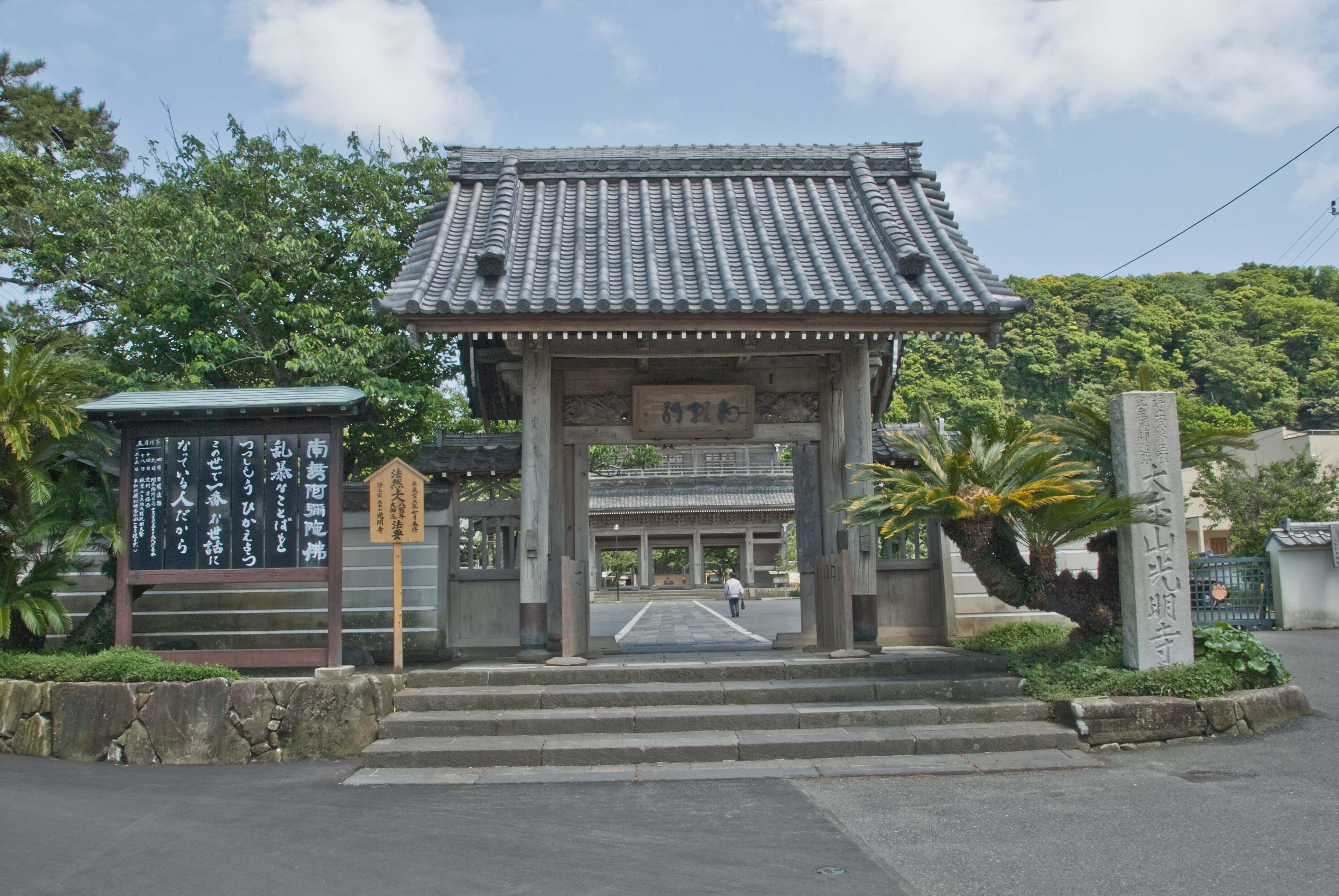|
Sōmon
is the gate at the entrance of a Buddhist temples in Japan, Buddhist temple in Japan.Iwanami Japanese dictionary, 6th Edition (2008), DVD version It often precedes the bigger and more important ''sanmon''. References [...More Info...] [...Related Items...] OR: [Wikipedia] [Google] [Baidu] |
Buddhist Temples In Japan
Buddhist temples or Buddhist monasteries together with Shinto shrines, are considered to be amongst the most numerous, famous, and important religious buildings in Japan.The term "Shinto shrine" is used in opposition to "Buddhist temple" to mirror in English the distinction made in Japanese between Shinto and Buddhist religious structures. In Japanese the first are called , the second . The shogunates or leaders of Japan have made it a priority to update and rebuild Buddhist temples since the Momoyama period. The Japanese word for a Buddhist monastery is ( ''kun'' reading) and the same kanji also has the pronunciation ''ji'' (''on'' reading), so that temple names frequently end in ''-dera'' or ''-ji''. Another ending, , is normally used to refer to minor temples. Such famous temples as Kiyomizu-dera, Enryaku-ji and Kōtoku-in are temples which use the described naming pattern. Etymology The Japanese word for a Buddhist temple was anciently also written phonetically 天良, ''ter ... [...More Info...] [...Related Items...] OR: [Wikipedia] [Google] [Baidu] |
Kōjien
is a single-volume Japanese dictionary first published by Iwanami Shoten in 1955. It is widely regarded as the most authoritative dictionary of Japanese, and newspaper editorials frequently cite its definitions. As of 2007, it had sold 11 million copies. Izuru Shinmura ''Kōjien'' was the magnum opus of Shinmura Izuru, 1876–1967, a professor of linguistics and Japanese at Kyoto University. He was born in Yamaguchi Prefecture and graduated from the prestigious Tokyo University, where he was a student of . After studying in Germany, Ueda taught comparative linguistics and edited foreign-language dictionaries in the latter part of the Meiji era. Through his tutelage, Shinmura became involved in Japanese language lexicography. Even ''Kōjien'' editions published after his death credit Shinmura as the chief editor. History Jien The predecessor of ''Kōjien'' originated during the Great Depression in East Asia. In 1930, the publisher Shigeo Oka (岡茂雄, ''Oka Shigeo'', 18 ... [...More Info...] [...Related Items...] OR: [Wikipedia] [Google] [Baidu] |
Sanmon
A , also called , is the most important gate of a Japanese Zen Buddhist temple, and is part of the Zen ''shichidō garan'', the group of buildings that forms the heart of a Zen Buddhist temple.JAANUS It can be often found in temples of other denominations too. Most ''sanmon'' are 2- or 3- bay ''nijūmon'' (a type of two-storied gate), but the name by itself does not imply any specific architecture. Position, function and structure Its importance notwithstanding, the ''sanmon'' is not the first gate of the temple, and in fact it usually stands between the '' sōmon'' (outer gate) and the ''butsuden'' (lit. "Hall of Buddha", i.e. the main hall). It used to be connected to a portico-like structure called , which however gradually disappeared during the Muromachi period, being replaced by the , a small building present on both sides of the gate and containing a stairway to the gate's second story. (Both ''sanrō'' are clearly visible in Tōfuku-ji's photo above.) The ''sanmon's'' ... [...More Info...] [...Related Items...] OR: [Wikipedia] [Google] [Baidu] |
Gates In Japan
Gates is the plural of gate, a point of entry to a space which is enclosed by walls. It may also refer to: People * Gates (surname), various people with the last name * Gates Brown (1939-2013), American Major League Baseball player * Gates McFadden (born 1949), American actress and choreographer * Gates P. Thruston (1835-1912), American Civil War veteran, lawyer and businessman * Josephine Gates Kelly (1888-1976), Native American activist Places Canada * Gates, British Columbia, Canada, a rural community ** Gates River, a river in British Columbia ** Gates Valley, a valley in British Columbia ** Gates Lake, at the head of the Gates River United States * Gates, Nebraska, an unincorporated community * Gates, New York, a town ** Gates (CDP), New York, census-designated place * Gates, Oregon, a city * Gates, Tennessee, a town * Gates County, North Carolina, United States ** Gates, North Carolina, an unincorporated community in the county * Gates Pass, Arizona, a mountain pass Ar ... [...More Info...] [...Related Items...] OR: [Wikipedia] [Google] [Baidu] |
Japanese Architectural Features
Japanese may refer to: * Something from or related to Japan, an island country in East Asia * Japanese language, spoken mainly in Japan * Japanese people, the ethnic group that identifies with Japan through ancestry or culture ** Japanese diaspora, Japanese emigrants and their descendants around the world * Japanese citizens, nationals of Japan under Japanese nationality law ** Foreign-born Japanese, naturalized citizens of Japan * Japanese writing system, consisting of kanji and kana * Japanese cuisine, the food and food culture of Japan See also * List of Japanese people * * Japonica (other) * Japonicum * Japonicus * Japanese studies Japanese studies ( Japanese: ) or Japan studies (sometimes Japanology in Europe), is a sub-field of area studies or East Asian studies involved in social sciences and humanities research on Japan. It incorporates fields such as the study of Japan ... {{disambiguation Language and nationality disambiguation pages ... [...More Info...] [...Related Items...] OR: [Wikipedia] [Google] [Baidu] |



